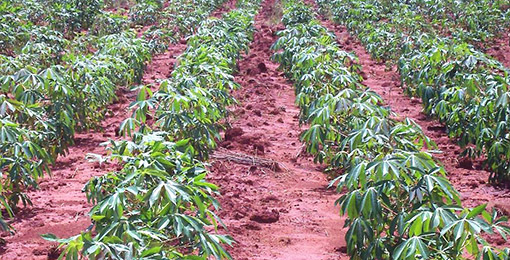Activated carbon from organic waste
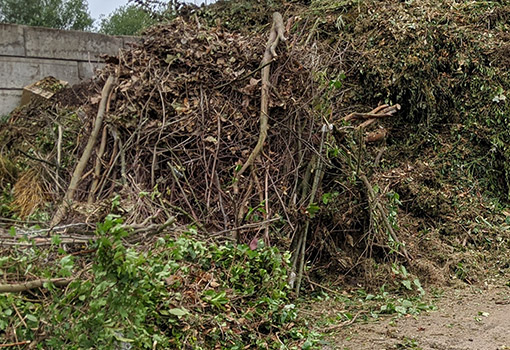
Garden waste that can be converted into activated carbon
Activated carbon is widely used in many applications and processes in industry, medicine and daily personal use. These include catalytically supported reactions in the chemical industry, use as filter material for cleaning gases and liquids, as well as use in cosmetics and food products.
Activated carbon (AC) is mostly produced from fossil raw materials such as coal and lignite, but also from nut shells (e.g. walnut or coconut). The production is either through chemical activation, where chemicals are used to increase surface area or thermal activation, in which the raw material is treated at 600-1000 °C in a carbon dioxide or water vapour atmosphere. Used activated carbon can usually be reactivated with partial loss of adsorption capacity and reused. The global demand for AC is increasing due to the many possible applications and the demand for regionally and renewably produced activated carbon is also substantial.
Live Energies GmbH acquired experimental equipment (mini rotary oven) to evaluate the activation process of different bio-based feedstock. A project was undertaken in cooperation with EnBW AG and the Karlsruhe Institute of Technology (KIT) in order to gain a broad understanding the activation process parameters in order to achieve an efficient and sustainable production of activated carbon from different feedstock.
During this project, optimal process parameters have been determined for various waste biomass types such as walnut shells, garden waste and residues from the organic waste bin. The conditions under which high-quality activated carbon could be produced were identified for different materials. For example, bio-based activated carbon from garden waste achieved BET surfaces of more than 1000 m²/g, which qualifies it for a wide range of commercial applications. Furthermore, research has shown that the combination of BSP process and activation is of great advantage. Through preliminary carbonisation, waste biomass can be stabilised and honogenised as potential input materials for activation. Without this process step, especially moist and low-ligneous biomass would not be suitable for activation.
The research will contribute to the development of a modular activation unit for BSP (biomass steam processing) carbonisation plants in order to widen the application spectrum of the BSP-technology
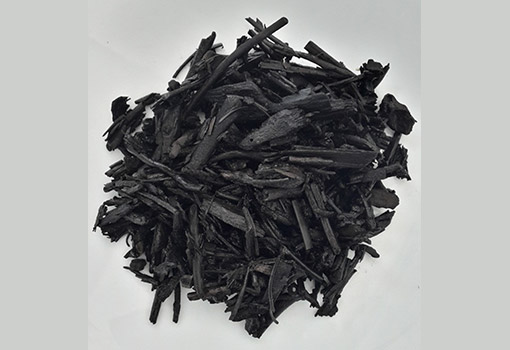
Activated carbon
Biogas from CAM (Crassulacean Acid Metabolism) plant biomass produced from wasteland
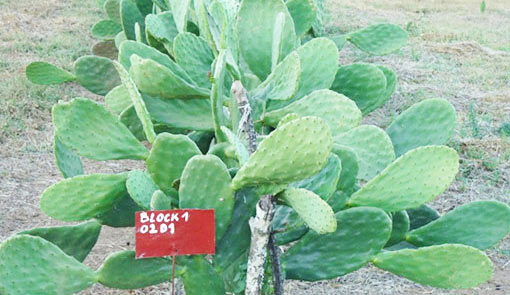
Opuntia ficus indica in one of the plots in Kenya
The European Union and several other countries have established programs to promote biogas as a fuel, leading to a significant increase in production capacities in recent years. Biogas conversion technologies have advanced to mid- and large-scale applications, while small scale solutions have been developed for stand-alone and remote systems.
Biogas could be a solution for energy shortage in remote areas in many developing countries if enough suitable feedstock can be identified. A trial plantation of Opuntia ficus-indica (L) Mill. (Cactaceae) and Euphorbia tirucalli L. (Euphorbiaceae) to test the viability of these as biogas feedstock in semi-arid tropics was established on degraded bush-land in Kenya.
This project explored the potential of intensive cultivation of these plants under various planting densities on marginal land and compared the specific methane production potential of their biomass. Harvested feedstock was evaluated for biogas /methane yield potential with Hohenheim Biogas Test (HBT) and found to be viable technologically and economically.
The project was financed by EnBW AG and the partners of Live Energies GmbH in this project were Live Energies (Kenya) Ltd., Osiris Gesellschaft für Bioenergie mbH and University of Hohenheim represented by the State Institute of Agricultural Engineering and Bioenergy.
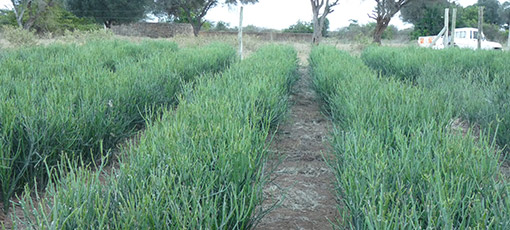
One of the Euphorbia tirucalli plots in Kenya
Publications
1. Suitability of Opuntia ficus-indica (L) Mill. and Euphorbia tirucalli L. as energy crops for anaerobic digestion (https://doi.org/10.1016/j.jaridenv.2019.104047)
Fuel oil from Jatropha seeds
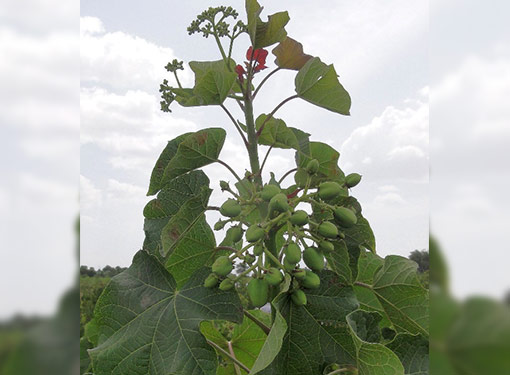
Jatropha plant with flower and fruit bunches
Jatropha curcas (physic nut, purging nut) is a shrub or a small tree belonging to the family Euphorbiaceae. It is widely distributed in almost all countries in the tropical regions of Africa, Asia and Latin America. Its seeds have an extractable oil content of around 35%. The plant is usually toxic; however, non-toxic, edible Jatropha varieties occur naturally. The difference between the toxic and non-toxic Jatropha is the presence of plant secondary compounds called phorbol esters in the seeds and other plant parts of the former
Jatropha oil, due to its excellent physical and chemical properties, has high potential for fuel oil production. It can be used as straight vegetable oil fuel in adapted motors, as feedstock for biodiesel (European and ASTM standards) aviation fuel and Hydo-Treated Vegetable Oils (HVOs). A key advantage of Jatropha is that it can grow on comparatively poor soil in semi-arid climates and can therefore be produced without competing with land usually used for food production
Live Energies was contracted in 2008 by a major automobile company based in Germany to manage a project to evaluate the economy of Jatropha cultivation for marginal farmers holding unused, degraded land in Tamil Nadu, India. The project has provided several insights into the potential of Jatropha as a biofuel crop and resulted in key “lessons learned” on the various aspects to be considered for its successful cultivation
The domestication of Jatropha only started some 12 years ago. Many Jatropha projects failed in the past since they mostly started their plantations with wild-collected seeds. With the availability of new improved seeds, the cultivation of Jatropha is set to become profitable in the near future. Our personnel have long academic research and practical experience in all aspects of the value chain of the Jatropha curcas cultivation and agronomy and we continue to work together with our sister company www.jatropower.ch
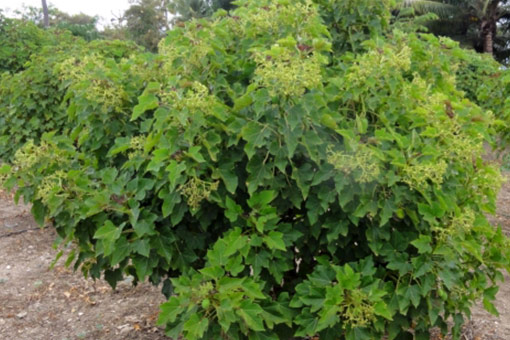
Jatropha plant with flower bunches from the farm
Publications (2019)
- Apomixis as a tool for development of high yielding clones and selections in Jatropha curcas L. https://doi.org/10.1007/s10722-019-00851-0
- Identification and validation of SNP markers linked to seed toxicity in Jatropha curcas L. https://www.nature.com/articles/s41598-019-46698-4.
- Edible jatropha is a source of multipurpose oil and high quality protein cake that can help the tropics go beyond meat: Beyond biofuels. Biofuels International, July/August 2019.
Cassava tuber from degraded land as Bio-ethanol feedstock
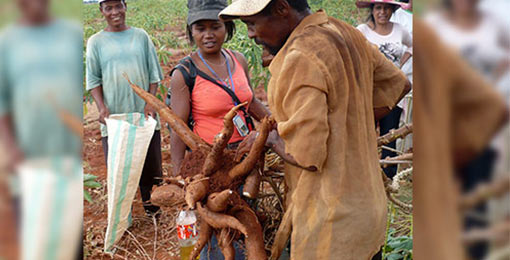
Cassava tubers harvesting
Bio-ethanol is an alternative or supplement to gasoline (petrol) and has become established as an alternative motor fuel due to cost advantages or policy mandates. As a fuel, bioethanol can be used in the pure form or via blending to conventional gasoline. Flexi-fuel vehicles have been developed where both gasoline and bioethanol can be used for a range of blending percentages going up to even 100% bioethanol.
Future ethanol projects need to address regional conditions (climate, soil quality, employment and infrastructure) in order to be viable and sustainable. Fuel ethanol production sites should not compete with food production areas if the feedstock can be produced from unused degraded land.
Live Energies, along with partners did a proof of concept project on feedstock production from unused degraded land for bioethanol. The crop evaluated was cassava (Manihot esculenta). Our personnel were involved in the project conception and in the planning and management of the same. The project was carried out in Madagascar and could prove that cassava can be produced profitably on wastelands with acidic soils of very low fertility.
The profitability calculation took into account the cost of production per tonne required to enable competitive ethanol production. Concepts for both centrally managed plantations and an out-grower model were elaborated. Detailed agronomic information on the tuber productivity and optimised plantation management techniques were generated for a very low level of mechanisation.
